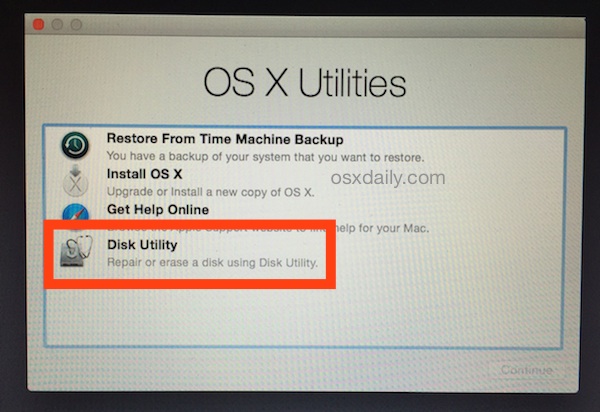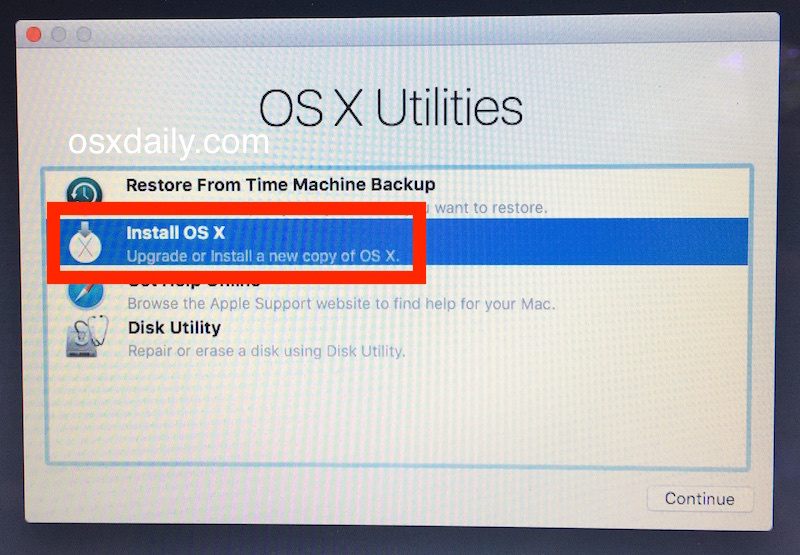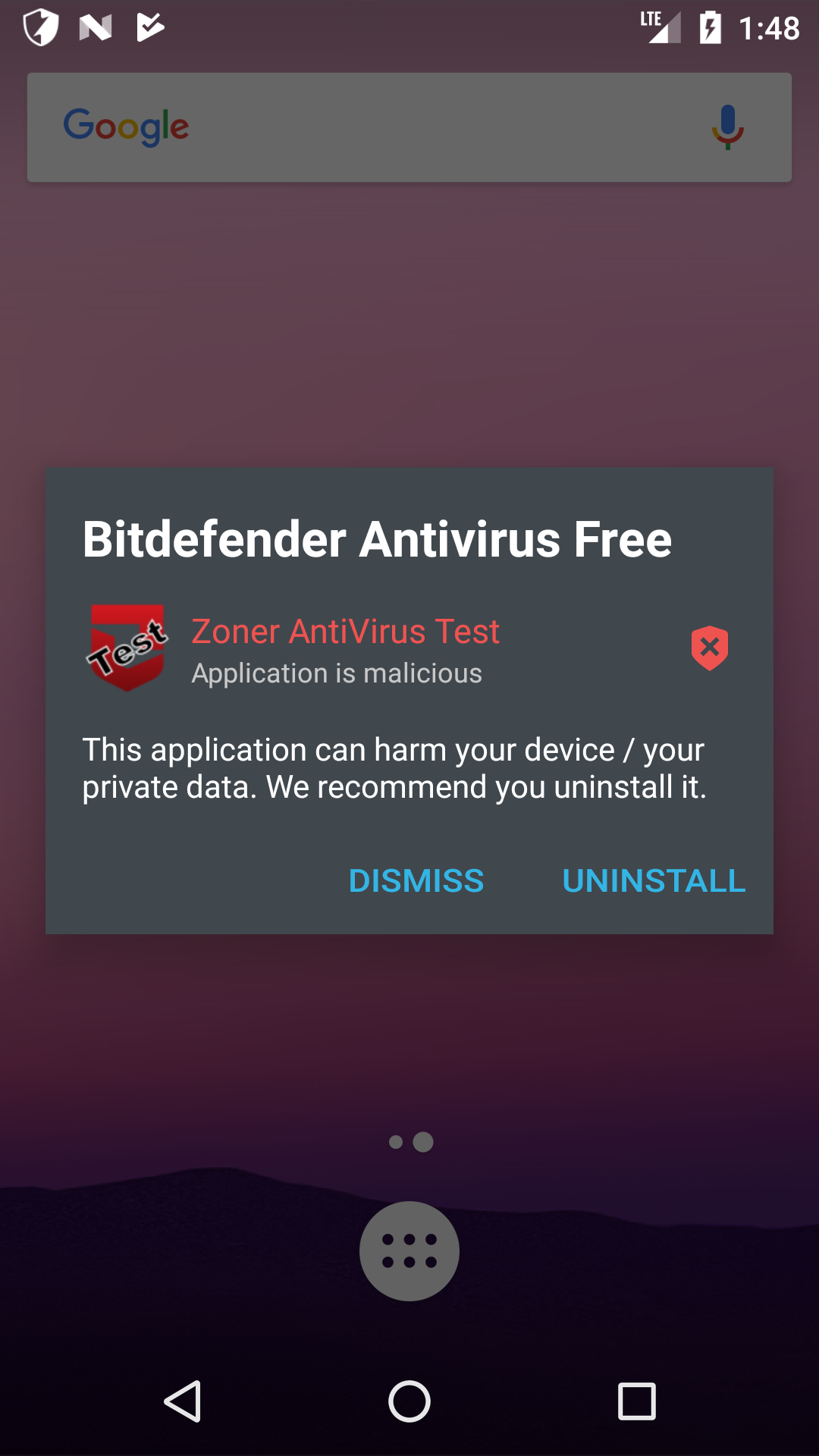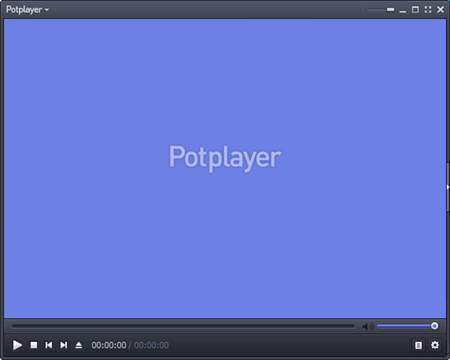- Mountain Lion is the latest OS X which is available to purchase and has access to download from the App Store. Mountain Lion is available in the format of digital download in the Mac.
- Clean install macOS 10.15 on a startup disk drive Again, this is the recommended option that will leave you with a high-performing Mac. It involves lots of cleaning and securing your files, though.
- In this tutorial we perform a clean installation of macOS Mojave on a Windows 10 P.C. Using VirtualBox. Unlike most tutorials which use a pre-built virtual h.
Hello and welcome to my User Tip
Step 2b: Get the install file for an older version of macOS. For older versions of macOS and Mac OS X it's a bit more difficult to get the install file: Apple doesn't offer downloads of outdated.
You need to erase and install 10.6 Snow Leopard, I will show you how to do this.
If your here because you upgraded to 10.7 Lion and want to go back to 10.6 Snow Leopard you need to see this thread.
A little more preparation is in order to make sure your files work in Snow Leopard.
If your here because you have a problem and you think erasing and reinstalling is going to solve it, it most certainly will, but you might not need to go this far and you might want to recover data off the non-booting drive first.

If your here because you want to secure erase data better than writing Zero's acorss the selected hard drive or partition (good enough for most folks), this tip doesn't cover that, see this one then come back here afterwards.
Use the correct 10.6 disk to install Snow Leopard
Use the free MacTracker to find your model of Mac, you can gleam the model from your Apple Menu > About this Mac > More information and look for something like 'MacBook Pro 3,1' and punch that into MacTracker.
There are basically two types of 10.6 install disks, the gray or black machine specfic ones that came with a new Mac (free iLife) or the 10.6.3 retail disks (no free iLife).
You can't use another model of Mac's 10.6 machine specific disks with another Mac, there isn't hardware drivers on those disks that will work on other Mac's.
If a Mac came pre-installed or from the factory with 10.6.3 or later, you cannot use the 10.6.3 retail disks (no iLife) from Apple online, you have to call Apple for your 10.6.3+ machine specific install disks (free iLife included)

Ready to erase and install Snow Leopard?
Your data will be gone after this and not recoverable what so ever, don't come crying later that you missed something.
You might want to take this chance to export web browser bookmarks, grab product keys or even clone the old 10.6 drive before you erase it.
Unmount and disconnect all other drives. No mistakes. Here we go.
Make sure the bottom of the disk is clean, use a very soft cloth and a tiny dab of rubbing alcohol and polish to a shine. 🙂
Hold c (or option/alt key) down on a wired or built in keyboard, and boot the machine, off the 10.6 installer disk (or hold option key boot off the 10.6 clone drive) and under the Utilities menu (folder) is Disk Utility.
To erase the entire drive of all partitions:
Select the entire internal boot drive on the far left, it will have the drive makers name and size.
Do not select the indented names, those are just partitions on the drive, you need to erase the entire drive to catch everything, rebuild the GUID partition table and the hidden EFI partition.
If your here to revert your machine to Snow Leopard from 10.7 or later, then make sure to select the ENTIRE drive on the left in Disk Uitlity.
To erase just the OS X partition leaving others like Bootcamp etc.
Select the indented name of the OS X partition instead, however it will not cure problems in the hidden EFI or GUID partition table. Do not do if your reverting to Snow Leopard from a later OS X verison, because 10.7 and later OS X verisons alter the GUID and add a Recovery HD partition that needs to be removed before 10.6 is reinstalled. This is so later when you need to use the 10.6 disk to repair the drive, it knows what is on the boot drive.
Click Erase > Security option > Zero All Data (will map off any failing sectors) go watch a movie, it takes a bit and improves your hard drives reliability and read speeds. (SSD no need zero, just erase). Trust me this works wonders!
If the Disk Utility > Zero Erase fails or hangs, the drive has run out of spare sectors and is worthless, it will have to be replaced, better you found out now than later with your data on it.
Check under Partition: Options that you have a GUID and Format: OS X Extended Journaled, if not change it to those and apply.
Quit Disk Utility. You will be back into the 10.6 installer.
Fresh installing Snow Leopard 10.6
If your using your option key bootable 10.6 clone, use the cloning software to reverse clone 10.6 onto the internal drive then return your files from the storage drive. Your done, see you later.
Now for you who just erased the internal drive via the 10.6 disk and need to install fresh.

'Fresh' means no possibly corrupt TimeMachine, Migration Assistant, or clone restores. New OS X, programs and only vetted files returned.
Performance types swear by this method as it allows the leaving of previous junk, malware, old files etc behind. Trim and speedy.
1: Quit Disk Utility and install 10.6. from the installer disk.
Reboot, setup and use the same user name as before. (different password ok) Why?, because you can place your user files from backup right on in and your iTunes playlists, permissions etc work. Unless you don't want to use the same name, then you lose the playlists and have to recreate them, change the permissions for files.
2: Use Software Update to get up to 10.6.8 fully, repeat until clear.. This is very important to do or you'll have problems later.
3: Install Rosetta for your PowerPC based programs
Insert the Mac OS X installation disc that came with your computer or with your Mac OS X retail package.
Double-click the Optional Installs folder, and then double-click the Optional Installs package.
A package has an icon that looks like an open box.
Follow the onscreen instructions. Select the disk where you want to install Rosetta and click Continue.
Select the checkbox next to Rosetta, click Continue, and then click Install.
4: Install all third party programs from fresh original sources and compatible with 10.6.8
If by chance you get a hang upon reboot after installing third party software, hold the shift key down upon booting and update or remove the problem software, you will know, you just installed it. 🙂
If you had 10.5 previously on the machine, you'll notice your iLife is missing with the 10.6 install. This is because the 10.6.3 disk doesn't have it, only the machine specific disks do that come with the Mac when it was new.
You can either buy the 10.6 iLife from Apple or use Pacifist from CharlesSoft to extract the 10.5 versions from the 10.5 install disks. You paid for it so it's yours.
5: Once you have all your third party software installed (as best as you can of course) next is to hook up your storage drive.
Return the contents of those user files folders: Music, Pictures, Movies, Documents etc (not Library) to their respective folders in each account
Apple support doc on installing 10.6 again
Hard drive performance tip
If you installed exactly in the order as I have outlined above (1, 2,3,4), and keep your boot drive below 50% filled, it will operate at peak performance forever until it dies, or you damage it by moving it around while it's operating.
Your hard drive performance will suffer greatly the more OS X boot partition data is written on the second 50% of the drive, even if you remove some to get under 50%.
If there is any data on the second 50% of the drive, the heads have to travel there to get it, use the smaller sectors and that slows read/write performance on hard drives (SSD no need to worry).
Whatever you do, don't go past 80% filled on boot drives on Mac's as your pressing your performance and stability luck.
Problems installing?
1: Hold the power button down to hard shutdown.

2: Hold the option key and trackpad button/wired left mouse button down (wired or built in keyboard might be needed) and boot the machine.
3: The disk hopefully should pop out, if not when you get to Startup Manager, keep pressing eject on the keyboard.
Clean Install Quickbooks For Mac
4: Take some rubbing alcohol (a tiny bit) on a soft clean cloth and polish the bottom of the disk, when dry and blemish free, stick it in and when it appears, click the arrow key to boot from it.
5: Review your secure erase procedures here to make sure your not leaving data
6: Try to reinstall 10.6 again
7: If that fails, call Apple and tell them what Mac you have and see if you require MACHINE SPECIFIC Snow Leopard install disks. (10.6.4 -10.6.8) These disks also include the free iLife suite on them.
The 10.6 white retail disks sold online are 10.6.3 and won't work in your machine due to a lack of more recent hardware drivers not present on those disks also they don't contain the free iLife suite.
Apple might also have 10.6.0 - 10.6.3 machine disks as well if you need the free iLife, but they could take longer to come than the 10.6.3 white retail disk.
8: After install, just hard shutdown and it will boot to the 'Welcome' video for the next owner.
Clean Install Mac Os Catalina
Advanced options
9: If Apple is going to take too long to send you disks or won't, there is a option to create a image of the bad disk and burn a new one on another Mac (possibly on a PC too) as a ISO image.
Sometimes when the read and burn occurs, errors are repaired and the new image will work when the old one won't.
10: Another option is to create a Snow Leopard boot USB from the 10.6 disk, then boot and install with that.
That's it, enjoy. 🙂
Make your Mac invincible
Normally when you install a new version of macOS, you just install it over the previous version. It’s quick, easy and means we can be back up and running in no time, with all your apps and data ready to use. Your data remains but your software and file junk remains as well.
Clean Install Mac Os Mojave
That’s why, sometimes, it makes more sense to run a clean install. Whether it’s because your Mac has accumulated so many junk files that it’s performance is badly affected or because you’re passing your Mac onto someone else and want to make sure all your data is removed. Or maybe you just want that fresh out of the box Mac experience again. Whatever your reasons, here is how to clean install macOS High Sierra.
How to prepare your Mac for the clean install
Before you do anything, check that your Mac is able to run Apple's new operating system.
To complete the clean install procedure described below, you'll need:
- macOS High Sierra Installer,available from the Mac App Store.
- a 16GB or larger USB flash drive
Notice: USB drive is needed for a clean install on your Mac’s startup drive. If you plan to clean install macOS on a non-startup drive, you don't need it. - go for a system cleanup and backup your data - this will allow you to easily return your Mac to the condition it was in before you installed macOS.
- and an hour or two to spare.
Clean Install Macos Catalina Without Usb
Choose the right way to clean install macOS High Sierra
Before you proceed, you need to make a choice how to run a clean install. If you only have one drive and it’s not partitioned and this is where you have all your files and your OS, your choice is to clean install on the startup drive. This way entails one important fact: all your files and data will be deleted during the process.
If you have another drive or volume other than your startup drive, use the second way which is clean installing on a non-startup drive. It’s a more lenient and less intrusive way because your Mac doesn’t get wiped clean, only your system.
If you don’t know which one you have, go with the first option, startup drive.
How to clean install macOS on a startup drive
Once you have everything that's needed, let's begin. Don’t worry, this step-by-step guide will walk you through all you need to do.
You don't need to dig through Internet to search and and download each apps mentioned below, all of them available on Setapp. With Setapp, you always have the latest full version of every app. Cancel anytime. Signup to try Setapp for free.
The process of performing a clean install involves wiping your Mac’s main drive clean so it’s essential that you back it up immediately before you start. You might not want to backup the files you don’t need and system junk, so make sure to clean that up beforehand. An easy way to go about this is to get a Mac cleaning app like CleanMyMac. It will save to hours of manual file cleanup and polish your system before the backup.
Start with a system cleanup
Delete everything you don't need - large and old files and archives, useless apps, cache data and other junk, duplicate files - all these files silently eat up the disk space, duplicate images are especially hard to find out.
You can always use CleanMyMac to cleanup macOS system junk, large and old files, and remove unwanted apps. You could do it manually, but CleanMyMac only all it takes is a few clicks.
Then you can use Gemini to easily find duplicate files and folders on your hard drive, so you can delete them and save precious storage space.
Backup your data
Now, for the backup itself use Get Backup Pro. It’s more powerful than Apple’s own Time Machine. It’s also a good idea to create a bootable clone, so if anything goes wrong you can go back to where you started easily. Also, a cloned drive makes copying files back to your newly-updated system very easy. And move your images and documents into the cloud or to an external drive, just to be on the safe side.
As well as backing up your Mac, you should also take screenshots of settings in any apps you’ve customized so that you can set them up again quickly later. And make sure you have a record of license codes for apps and passwords for websites.
Clean install macOS, securely
Your Mac deserves a fresh start. Get the right tools for clean installing Apple's operating system.
Create a bootable macOS installer
- Download macOS High Sierra from the App Store. Here is a link to find it on apple.com.
- When it’s finished, the installer will launch. As soon as it does, select File and Quit (or keyboard shortcut Command-Q) so it doesn’t install. The installer will remain in your Applications folder.
- Plug in the USB stick and launch Disk Utilities.
It’s a good idea to use a USB stick to put the bootable installer onto. It will need to be at least 8GB in size. - Click the Erase tab and make sure Mac OS Extended (Journaled) is selected in the format tab.
- Give the USB stick a name, then click Erase.
- When it’s finished, click Done and close Disk Utility.
- Launch Terminal either by searching for it in Spotlight or navigating to the Utilities folder in Applications.
- Type, or paste, the following command into Terminal, where [YOUR DRIVE NAME] is the name you gave the installer drive when you formatted it:
sudo /Applications/Install macOS High Sierra.app/Contents/Resources/createinstallmedia --volume /Volumes/[YOUR DRIVE NAME] --applicationpath /Applications/Install macOS High Sierra.app
Notice: Remember to replace [YOUR DRIVE NAME] with the name of your installer disk. - Hit Return.
- Type in your admin password and wait.
- When the process is finished, the word Done will appear in the Terminal window.
- You can then quit Terminal
Install macOS on your startup disk drive
Make sure you backup your Mac to keep your important files, before taking next step, that erase your Mac’s Startup drive.
To erase your Mac’s main drive:
- Go to System Preferences
- Сlick Startup disk and choose the installer you just created.
- Restart your Mac and hold down Command-R to boot into recovery mode.
- Take your bootable USB and connect it to your Mac.
When the macOS Utilities screen appears, follow these steps:
- Select Reinstall a new copy of macOS.
- Click Continue, then click Continue again when the next window appears.
- Agree to the terms and conditions, then select your Mac’s internal drive.
- Click Install.
- Wait for macOS High Sierra to install and your Mac to restart.
When your Mac has restarted, you’ll need to follow the process of setting it up as if it was a brand new Mac. So, you’ll need to connect to your wifi router and type in the password. Then you’ll need to type in the details for your iCloud account. Then you’ll have to set up a new admin user account.
Once you’ve done that, you can start installing apps. In order to re-install Setapp apps, go to setapp.com to get Setapp installer or download Setapp here. You’ll need your username and password.
It’s a good idea to only download those apps you need to use straight away. Other apps can be downloaded as and when you need them. That way you avoid cluttering up your brand new macOS.
If you use a cloud service like Dropbox, now is the time to re-connect. And you can copy any documents, photos or other files you need from the backup you made at the start.
Find more information about Apple Mac update
Clean Install macOS High Sierra on a non-startup drive
You don’t need a backup for this option, it’s safer and faster than the previous way but only available to you if you have an extra drive or your drive is broken down into volumes.
Here’s how to instal your new macOS on the non-startup disk.
Step 1. Erase your non-startup drive
Before you install the new OS on it, you need to erase all data on the drive you’ve chosen for it. To do it, use Disk Utility. Choose the volume you’d like to clean up and click Erase.
If you still need some info from that drive, you can use an app like ChronoSync Express to sync it with another drive and keep the files.

Clean Install For Macbook Pro
Step 2. Download the macOS High Sierra Installer from the Mac App Store
To download it, open the Mac App Store and go to the Updates tab (Here is a link.) When your installer is downloaded it will launch automatically but you need to quit it.
Reinstall Macos Catalina
Fortunately, for this option you don’t need to create a specific bootable drive and you can simply use the installer from your startup drive and install the macOS onto the other one.
Step 3. Install macOS High Sierra to your non-startup drive
Launch the Installer from the Applications folder and press Continue. Change the target drive for installation. macOS will offer you startup drive by default so you need to click Show All Disks button and choose your non-startup disk volume. From then on simply follow the installation guide and after that you’ll have to set up your Mac as a new one. That entails creating a new user account, setting up date and time zone etc.
Now that you have the latest macOS, you can enjoy its superior features and top performance. Clean install (when performed on a startup drive) does remove your apps so if you don’t feel like looking for every app and their licenses again, get Setapp. More than 100 apps in one suite available by subscription. Saves you time and money on looking for apps for your daily tasks.
These might also interest you:
Meantime, prepare for all the awesome things you can do with Setapp.
Read onSign Up
